- News
- Reviews
- Bikes
- Accessories
- Accessories - misc
- Computer mounts
- Bags
- Bar ends
- Bike bags & cases
- Bottle cages
- Bottles
- Cameras
- Car racks
- Child seats
- Computers
- Glasses
- GPS units
- Helmets
- Lights - front
- Lights - rear
- Lights - sets
- Locks
- Mirrors
- Mudguards
- Racks
- Pumps & CO2 inflators
- Puncture kits
- Reflectives
- Smart watches
- Stands and racks
- Trailers
- Clothing
- Components
- Bar tape & grips
- Bottom brackets
- Brake & gear cables
- Brake & STI levers
- Brake pads & spares
- Brakes
- Cassettes & freewheels
- Chains
- Chainsets & chainrings
- Derailleurs - front
- Derailleurs - rear
- Forks
- Gear levers & shifters
- Groupsets
- Handlebars & extensions
- Headsets
- Hubs
- Inner tubes
- Pedals
- Quick releases & skewers
- Saddles
- Seatposts
- Stems
- Wheels
- Tyres
- Health, fitness and nutrition
- Tools and workshop
- Miscellaneous
- Tubeless valves
- Buyers Guides
- Features
- Forum
- Recommends
- Podcast
review
 2021 Knog Blinder Skull Rear Light - skull 1.jpg
2021 Knog Blinder Skull Rear Light - skull 1.jpg£39.99
VERDICT:
Bright and funky light for metal heads and pirates – not the best light you can get but the best one with a skull on it
Skull!
Small
Light
Decent run-times
Works with aero posts
Some side visibility
You can get more visibility for less $ if you don't absolutely need it to be skull shaped
Tiny warning lights for low battery/charging are hard to see
Weight:
38g
Contact:
At road.cc every product is thoroughly tested for as long as it takes to get a proper insight into how well it works. Our reviewers are experienced cyclists that we trust to be objective. While we strive to ensure that opinions expressed are backed up by facts, reviews are by their nature an informed opinion, not a definitive verdict. We don't intentionally try to break anything (except locks) but we do try to look for weak points in any design. The overall score is not just an average of the other scores: it reflects both a product's function and value – with value determined by how a product compares with items of similar spec, quality, and price.
What the road.cc scores meanGood scores are more common than bad, because fortunately good products are more common than bad.
- Exceptional
- Excellent
- Very Good
- Good
- Quite good
- Average
- Not so good
- Poor
- Bad
- Appalling
The Knog Blinder Skull is an unusual rear light that offers decent illumination and loads of flash patterns, most of which feature a skull-shaped output. If the skull doesn't do it for you, you can also buy variants with more conventional patterns. But come on, you're here because this one has a skull, right? That's the one you want.
Knog is a well-established Australian brand that makes quirky cycle accessories; in the past it's offered locks, but the range today comprises front and rear lights and the Oi bells.
> Find your nearest dealer here
Many of its recent rear lights have used COB technology, where the LED chips are mounted directly onto the circuit board, allowing a high density and hence higher output.
Here there are a whopping 144 LEDs in a 3x3cm square, kicking out 100 lumens at maximum brightness. That's a lot – there are plenty of 20 or 30-lumen rear lights that many would consider bright enough for most applications.
The Blinder range is big – there are eight variants of this light, comprising four 100-lumen rear lights and four front lights rated at 200 lumens. They are identical except for the four designs: an "X", a square, a 3x3 chequerboard and this skull (or – possibly – alien) are available for both front and rear. Pick your design carefully – each light is permanently set to a single pattern. Knog's ModeMaker software doesn't work with the Blinder, so you can't use it to change the design or flash patterns here, unfortunately.
While 100 lumens is a big output for a rear light, the Blinder doesn't do anything particularly clever with all that light. There are no lenses to focus a beam off into the distance, it all just tumbles out through the red window. Still, it's enough to be clearly visible from several hundred metres on a lit street in the dark, which for most people will be sufficient. It's worth pointing out that the shape (whether it's the skull, the X or whatever) is clear at 5m and just about identifiable at 10m, so the audience for your choice of design may be limited.
> Buyer’s Guide: 22 of the best rear lights for cycling
As the red window wraps round a few millimetres each side, there is some side visibility – it is better in this respect than many rear lights, but much less good than others such as Knog's own Cobber range and Cateye's Rapid and VIZ ranges. My ideal rear light would combine the output and/or lens needed to carry a long way down the road, and as wide a visibility angle as possible – it is easy these days to buy lights that are very visible through at least 270 degrees. This really only ticks the first of these boxes.
> 6 tips for cycling at night – don't let the dark stop you riding
One benefit of the more diffuse lighting that you get without any sort of lens here is that it is less dazzling at night – some very bright rear lights with lenses are quite unsuitable for night-time use on full brightness for that reason (but would work better to attract the attention of a distracted driver who's a way off down the road in the daytime).
Mount
The Blinder is a piece of cake to fit, coming with a choice of o-rings that work with a plastic clasp to hook around the seatpost. We've seen this arrangement before on a bunch of Knog lights and although the clasp feels a little unnecessary, it does make it marginally less fiddly to remove and fit than just a simple o-ring or ladder strap.
It works well on round seatposts and aero ones, although less well on D-shaped posts. The back of the light has a v-shaped cutaway that doesn't really sit as nicely on that sort of comfort-focused design. It's by no means impossible to fit, it just doesn't stay in place quite as nicely as on other seatpost shapes.
Unusually (aside from the rest of Knog's COB-based light range), there is no wedge to angle the Blinder up to the horizontal, so it will sit at whatever angle your seatpost is. Without a lens or any kind of focused beam, this is arguably not really a big deal – 20 degrees or so doesn't make a lot of difference to the visible output.
Operation, modes and run-times
In terms of operation, it's the now ubiquitous "long-press for on/off, click to cycle modes" deal here.
There are plenty of modes – nine in total, from a parsimonious "Eco Flash" to "Max Steady". Run-time is given for those two extremes – 55 hours and 2.5 hours respectively – with the implication that everything else falls somewhere in between. I tested the Max Steady and it ran for almost exactly the quoted time before the low battery warning came on (more on this later) and then a further 15 minutes before switching off.
Aside from Max Steady and a simple full-output flash mode, where all of the LEDs are lit, the other modes all feature the skull design in a variety of flashes and fades. I wasn't convinced there was significant variation in visibility or attention-grabbing between many of these, so your choice will depend more on what you like. It could be argued that there are more modes than you really need here, but I guess programming them doesn't cost that much.
Charging
Another feature we've seen before from Knog is the moulded USB-A tongue for charging. Rather than the more common micro-USB or USB-C ports with bungs, here there is an exposed USB-A connector which sticks out the back of the light and acts as part of the attachment to the bike. You simply plug it into any phone charger or laptop port to charge. It is as easy to push it in the wrong way round as it is correctly, which won't charge the light, but you won't make this mistake many times.
The exposed contacts seemed a questionable idea when I first came across them, but I've not had an issue with them on other Knog lights, and it is arguably more foolproof than a light that needs a bung replacing to be waterproof.
Either side of the power button is a rather small, rather dim LED. One lights red to warn you that the battery is getting low and stays on a second or two after you switch the light off, which is helpful as you might otherwise miss it. The other lights to show that it is charging – red initially, then green for a bit when the light is fully charged before it goes off again.
With the power button and these LEDs on the same side as the USB-A tongue, I invariably found that whatever I used to charge the light meant that these lights were facing downward and very difficult to see. This was the case with the various phone chargers I tried and laptop USB ports – only by using a USB-A to USB-A extension cable can you position the light so you can actually verify that it's charging. Okay, it's not a total deal-breaker, but it's disappointing that Knog hasn't done this better.
It's also not a new problem.
Like most rear bike lights, there is no means of replacing the battery in the Blinder, so when it doesn't hold charge it's time for a new light. Slightly concerningly, the warranty offered on the battery is a meagre six months, whereas the rest of the light is guaranteed for two years.
Value and conclusion
The Blinder Skull reminded me of another Knog product, the Oi bell, in that – by any objective measure – it is less good than some usefully cheaper competitor products. The Oi bell is not very loud and not brilliant at attracting attention but it sells well because it is a unique product that looks unlikely anything else on the market.
The Skull is pretty bright, but there are cheaper alternatives that offer better all-round visibility than this. If it was my money, I'd probably opt for one of the Cateye VIZ range, which offer a better lumens-per-buck ratio, better side visibility and a lens to focus output down the road. Otherwise, the Gemini Juno uses a smaller number of COB LEDs to achieve the same 100-lumen output for a tenner less.
They don't have skulls, though, and that bit of fun is enough for this to be an appealing product. It's a decent light too, happily.
Verdict
Bright and funky light for metal heads and pirates – not the best light you can get but the best one with a skull on it
road.cc test report
Make and model: Knog Blinder Skull Rear Light
Size tested: 100 lumens
Tell us what the light is for, and who it's aimed at. What do the manufacturers say about it? How does that compare to your own feelings about it?
Knog says:
Describing this light as bright is a serious under-statement. Using new COB technology, Blinder Skull produces a punchy 100 lumens that will ensure you're seen and safe in all light conditions.
It features a grid pattern that makes this Blinder one of Knog's most individual lights ever. The graphic flash pattern has 8 different modes and is also available as a front light to make a unique pair.
The Blinder Skull has integrated USB recharging, is 100% waterproof and has a whopping 60 hour run-time when using eco flash mode.
Tell us some more about the technical aspects of the light?
From Knog:
Dimensions H: 43mm x W: 43mm x L:46mm
Weight 34 grams
Charge Time 4 hours
Lumens 100
Rate the light for quality of construction:
8/10
Classic Knog construction with quite a bit of silicone and idiosyncratic design.
Rate the light for design and ease of use. How simple was the light to use?
5/10
Rather small power button also cycles through modes. Two tiny LEDs either side indicate charging and low-battery, neither is hugely visible. The exposed USB tongue for charging is an interesting approach we've seen on a few other lights – it does away with the need for a bung.
Rate the light for the design and usability of the clamping system/s
8/10
Very simple to install on the bike; clasp seems a little unnecessary but does make it slightly easier to fit and remove than if you just have an o-ring or strap. Unusually, there is no wedge in the mount, meaning that the light sits at the same angle as your seatpost. As there is no lens, this matters less than on other lights.
Rate the light for waterproofing. How did it stand up to the elements?
9/10
No issues experienced and has fewer ways in for water than most lights.
Rate the light for battery life. How long did it last? How long did it take to recharge?
7/10
Like most lights, there's a huge range in run-time depending on mode. Charge time is 4 hours; a little longer on a low-power USB source.
Rate the light for performance:
7/10
With a claimed 100 lumens, it's fairly bright and has some quite eye-catching modes. Good visibility through about a 160-degree span, but less side-visibility than many rear lights, and no optics to focus the beam and extend range rearward. Still, I generally felt comfortable using this as my only rear light.
Rate the light for durability:
7/10
No issues experienced. Like most modern bike lights, there's no means of replacing the batteries once they're at the end of their life, so you'd be looking at replacing it at that point. Battery warranty is rather short, too.
Rate the light for weight:
8/10
Rate the light for value:
4/10
In objective terms, there are much better value options on the market offering comparable output, better side-visibility and longer range for less money. They don't have skulls, though, do they?
Tell us how the light performed overall when used for its designed purpose
For its size, it's a fairly powerful light with decent run-times in the flashing modes, and it's easy to fit and charge.
Tell us what you particularly liked about the light
Fun design, eye-catching flash patterns, small and light, reasonable run-times.
Tell us what you particularly disliked about the light
Side-visibility could be better, position of charge/low battery lights is an irritation, it's a bit pricey.
How does the price compare to that of similar products in the market, including ones recently tested on road.cc?
You can get a 100-lumen rear light for usefully less than this, such as the Cateye VIZ 100 and Giant Recon TL 100 both at £25, and the Gemini Juno 100 at £29.99. Here you're mostly paying for the fun skull design, I'd suggest.
Did you enjoy using the light? Yes
Would you consider buying the light? Maybe
Would you recommend the light to a friend? Maybe
Use this box to explain your overall score
It's good: 100 lumens is enough for this to be an effective light in most environments. It's certainly not the most effective 100lm light on the market, and some of them are cheaper than this. You'll buy it because you like the design. Or not.
About the tester
Age: 42
I usually ride: On-one Bish Bash Bosh My best bike is: Rose X-Lite CRS
I've been riding for: Over 20 years I ride: Most days I would class myself as: Expert
I regularly do the following types of riding: road racing, time trialling, cyclo cross, commuting, touring, club rides, sportives, general fitness riding, fixed/singlespeed, mtb,
Jez spends his days making robots that drive cars but is happiest when on two wheels. His roots are in mountain biking but he spends more time nowadays on the road, occasionally racing but more often just riding.
Latest Comments
- chrisonabike 2 sec ago
Luckily the Labour lot understand all the above, and aren't just pursuing "growth" because of the trickle down effect (a rising tide floats all...
- eburtthebike 4 min 29 sec ago
I wonder if it's the Dutch wind turbines that make the windmills turn?
- Miller 9 min 28 sec ago
Because the reframing work in post is a right pain in the neck, the reframed quality doesn't match normal action cams, because the cameras are...
- Simon E 15 min 16 sec ago
The whole basis of drivers v cyclists conveniently forgetting that the majority of cyclists also drive a car....
- staticV3 19 min 4 sec ago
Someone please explain to me. My Rockbros Q5 has:...
- David9694 51 min 43 sec ago
"This will kill tourism" fury as Devon price hikes confirmed...
- dubwise 1 hour 2 min ago
Didn't realise vehicles had eyes.
- David9694 1 hour 5 min ago
Car crashes into lamppost in Spring Road, Southampton https://www.dailyecho.co.uk/news/24909092.car-crashes-lamppost-spring-ro...
- David9694 1 hour 7 min ago
Spray.bike got me started on resprays. But I think "car" paint from Halfords gives a nicer finish and is no harder to use.





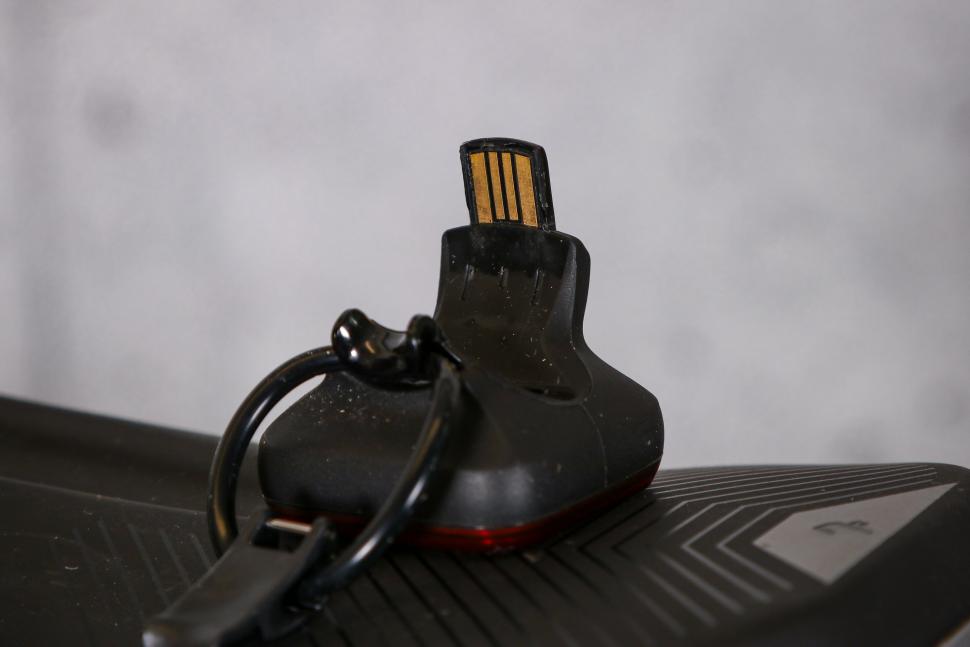
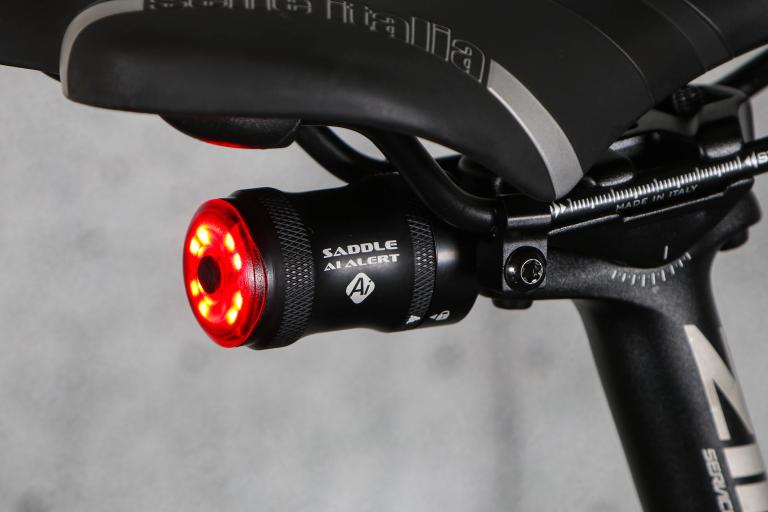
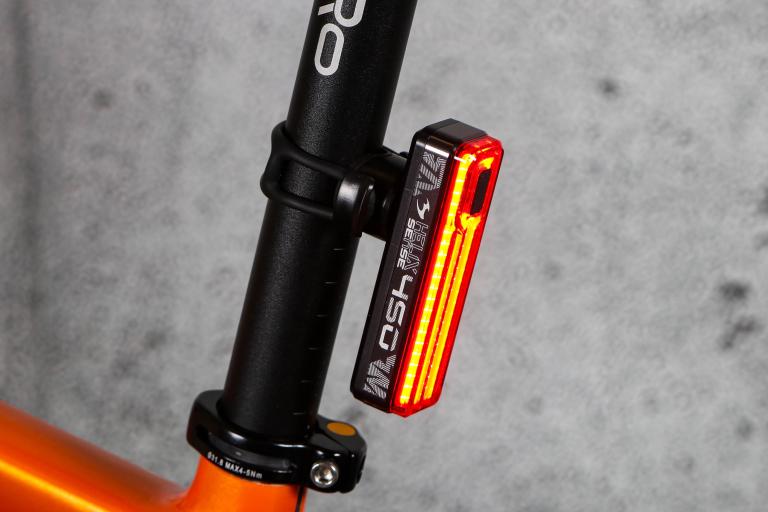
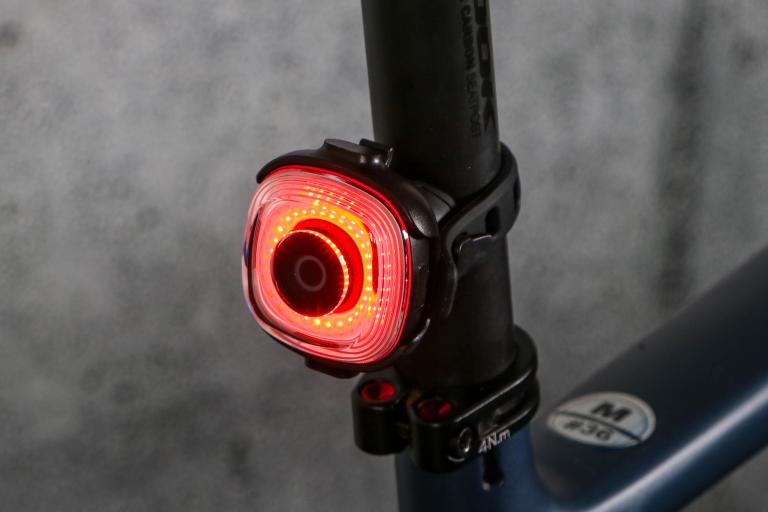
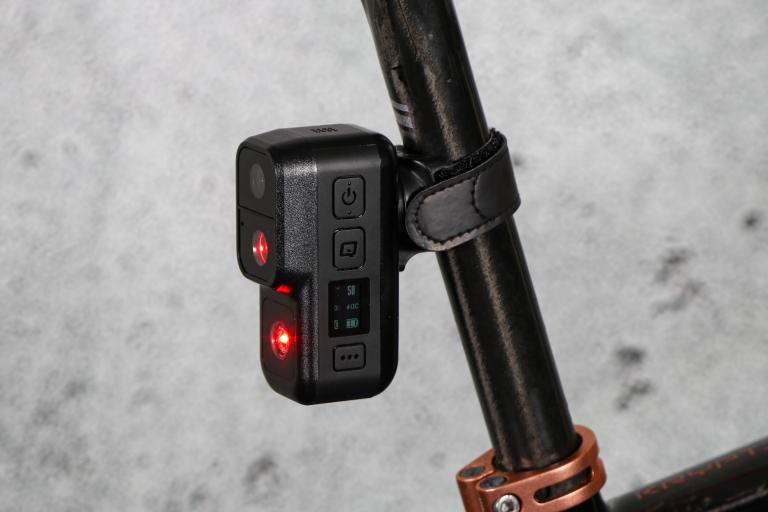
Add new comment
7 comments
How did Knog go from a cheap as chips line sold by PlanetX to something this expensive, yet badly engineered (no wedge and fixed battery).
I'm sticking with Cateye.
Why is this product not explicitly "not recommended"?
Spraying 100 lumens of unfocused red light behind you to blind pedestrians, cyclists and car drivers alike, is just plan irresponsible and posdibly even detrimental to your own safety.
Because that wasn't my experience, having both used and followed this light. The lack of lens focusing the beam makes it much less dazzling than a 100lm light with a lens would be. Looking forward to your thoughts on the 450lm rear light I'm also testing... 😀
Skull ?
Jellyfish. Space Invader.
I'd never have said skull without the review.
Im
I was just thinking EXACTLY the same thing!
Though I had moved to a more octopus rather than jellyfish.
Definitely a Space Invader.
If they could do a version with the invader moving, I'd be updating my Christmas list. But then, by the magic of that internet: https://m.youtube.com/watch?v=GJ_XmJD-ncg